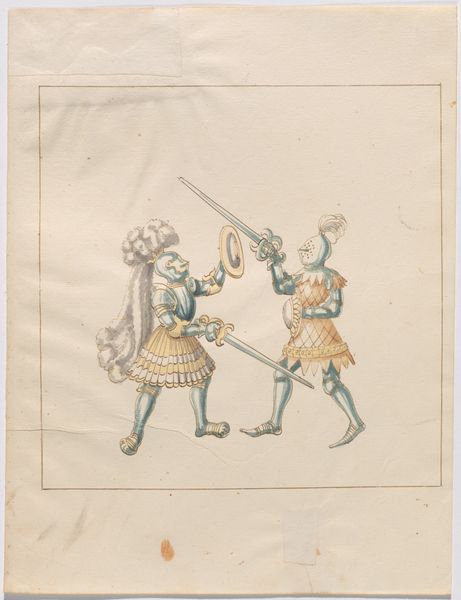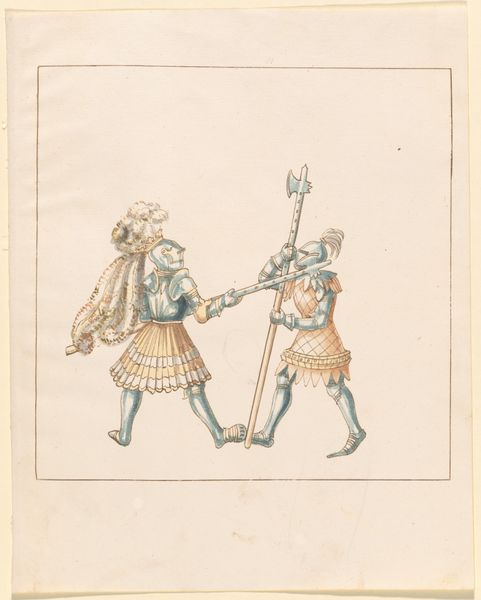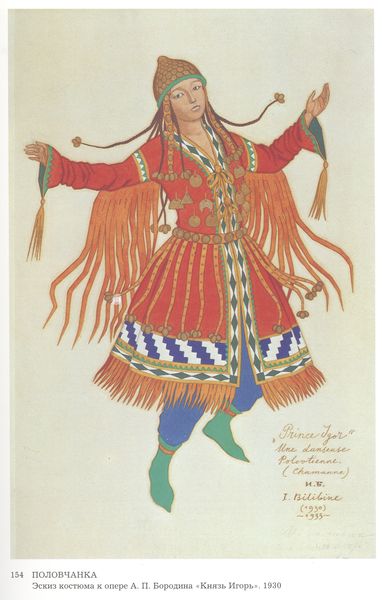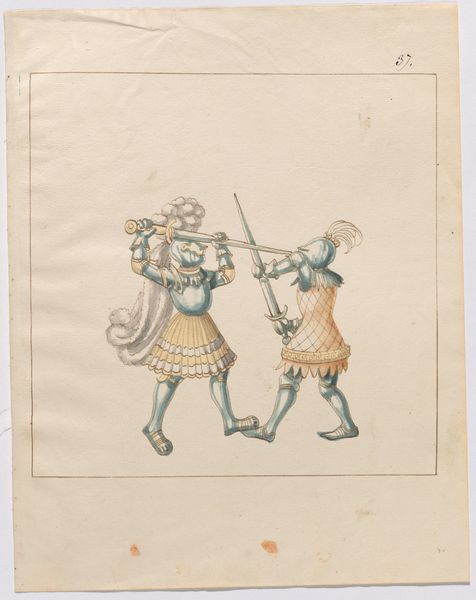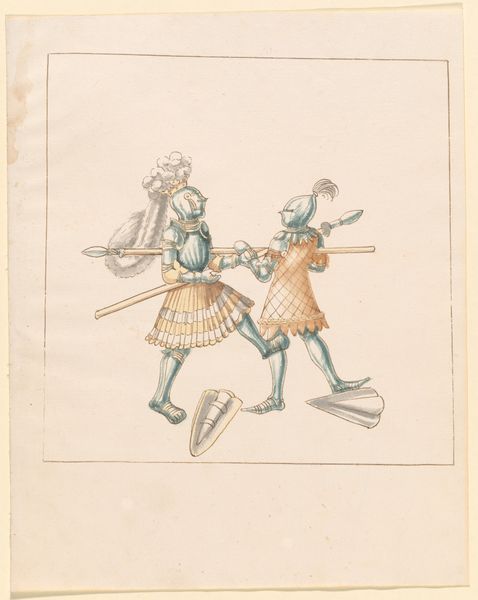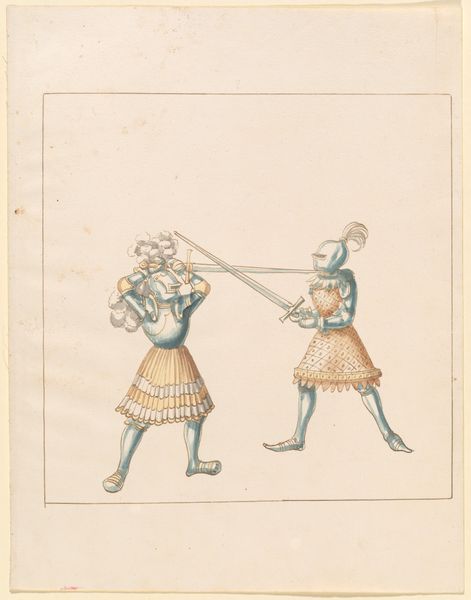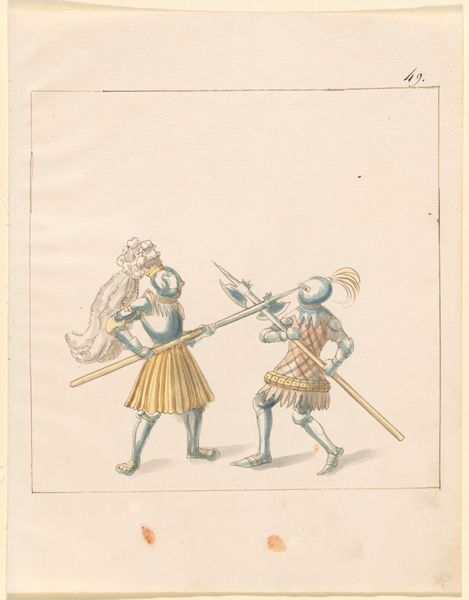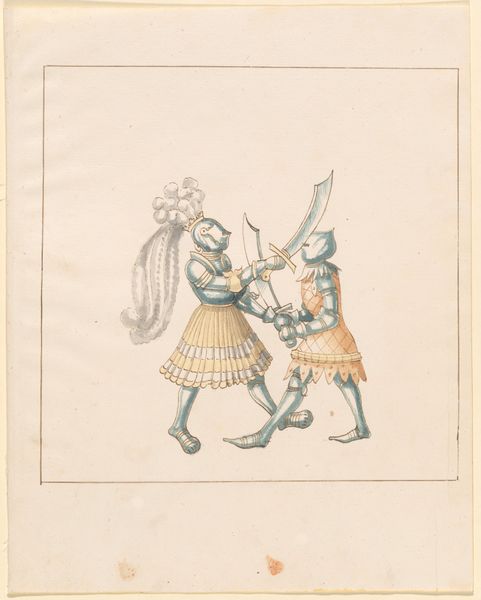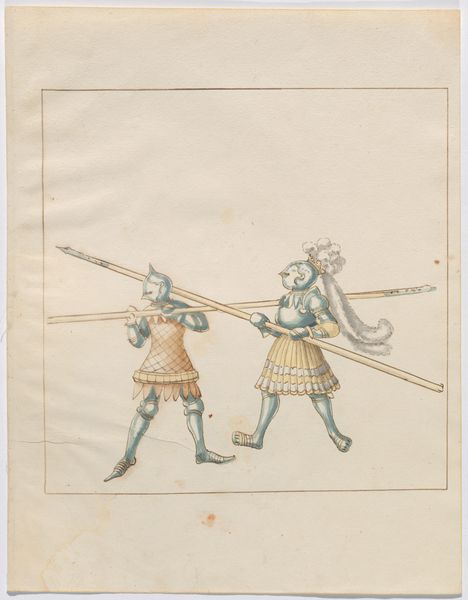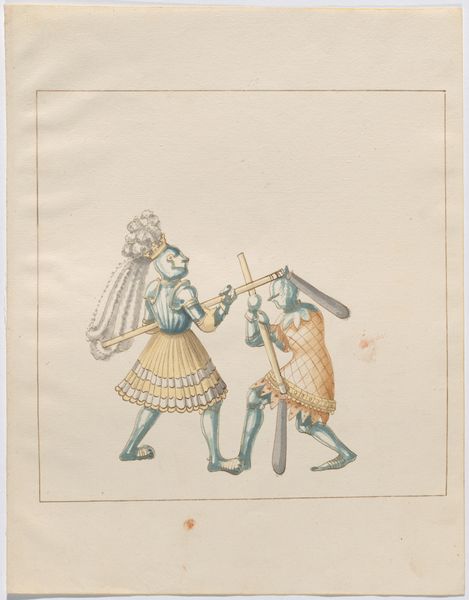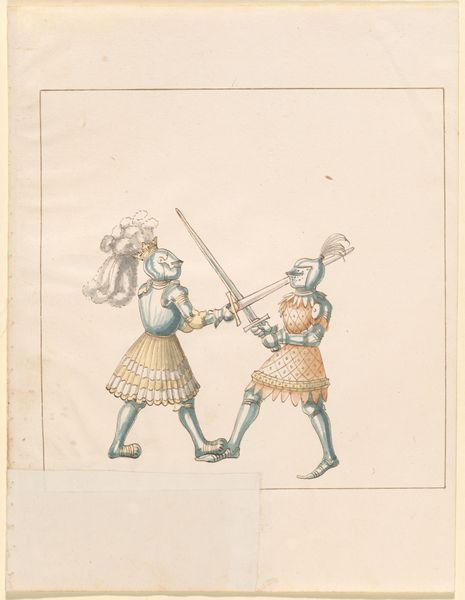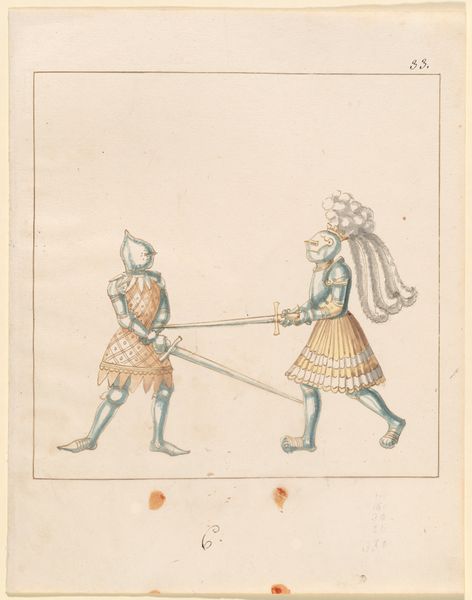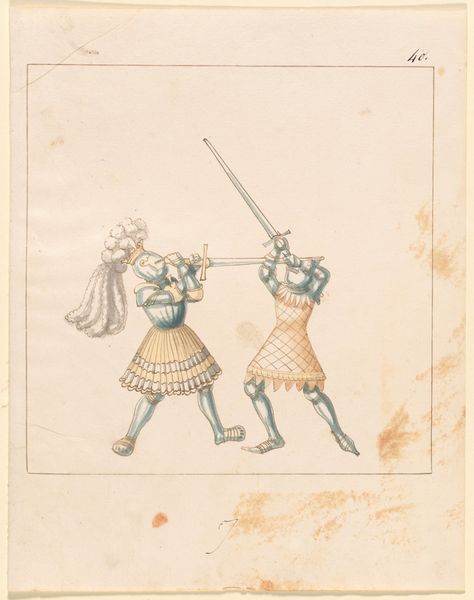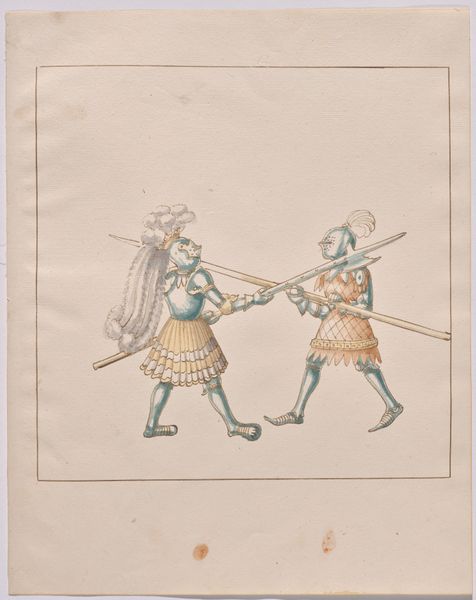
Drawing of Two 'Americans' for Ballet de la Douairière de Billebahaut 1626
0:00
0:00
drawing, coloured-pencil, print, paper
#
portrait
#
drawing
#
coloured-pencil
# print
#
paper
#
coloured pencil
#
history-painting
Dimensions: 8 15/16 x 6 7/8 in. (22.7 x 17.5 cm)
Copyright: Public Domain
Curator: This is Daniel Rabel's drawing, dating from 1626, of two figures titled 'Americans' created for the Ballet de la Douairière de Billebahaut. Executed in colored pencil, ink, and possibly wash on paper, it gives us a rare glimpse into costume design of the era. Editor: My initial impression is surprise. They are dressed as Indigenous people but rendered through a distinctly European lens. The plumage feels more decorative than authentic, wouldn't you agree? Curator: Precisely. Consider the cultural context of 17th-century France. There was a surge of interest in the Americas, but mediated by colonial narratives. This drawing isn’t about accurate representation but about spectacle. Court ballets often functioned as propaganda, reinforcing power through visual display. Editor: It’s fascinating how the mirrors act almost as extensions of the dancers’ gestures. Mirrors throughout history carry themes of self-reflection, illusion, and sometimes vanity. Are they perhaps suggesting the Europeans saw themselves reflected, albeit distorted, in their perception of the ‘Americans’? Curator: A compelling interpretation! The mirrors might also reference the theatrical nature of the ballet itself – the reflection of performance. Furthermore, their gestures strike me as highly stylized and perhaps codified in choreographic tradition. Editor: Those feathered shoulder pieces resemble wings, echoing birds native to the Americas but clearly stylized to fit the fashion. Curator: Yes, they reinforce this tension between reality and representation so important to understanding depictions of Indigenous peoples throughout early colonial imagery. The artist had never seen them; these are purely imaginary renderings based on descriptions that were also fictionalized. Editor: Rabel is using symbolism to craft his interpretation, shaping our idea of America using what was in his cultural vocabulary. Curator: Exactly! Thank you for sharing your rich insight and interpretation on those historical representations. Editor: And thank you for helping reveal what lies underneath the visual motifs within those images.
Comments
No comments
Be the first to comment and join the conversation on the ultimate creative platform.
